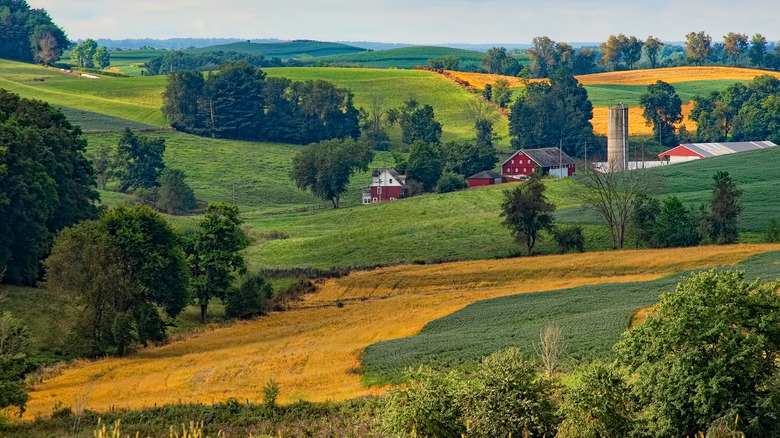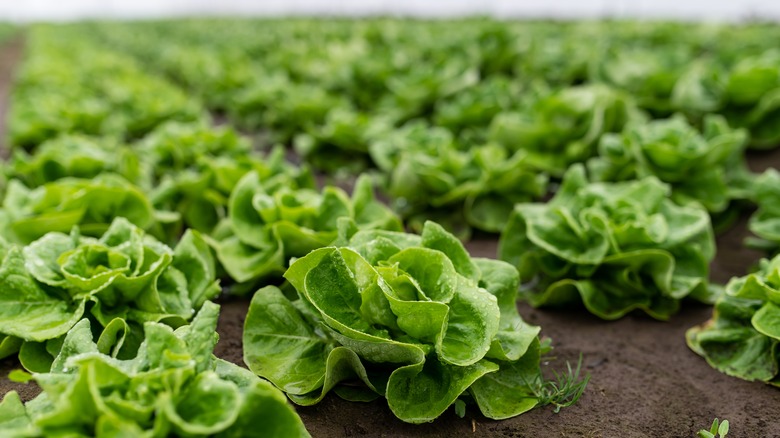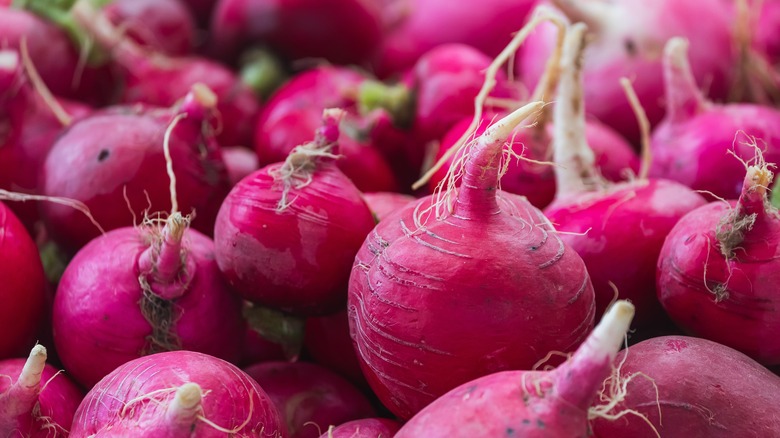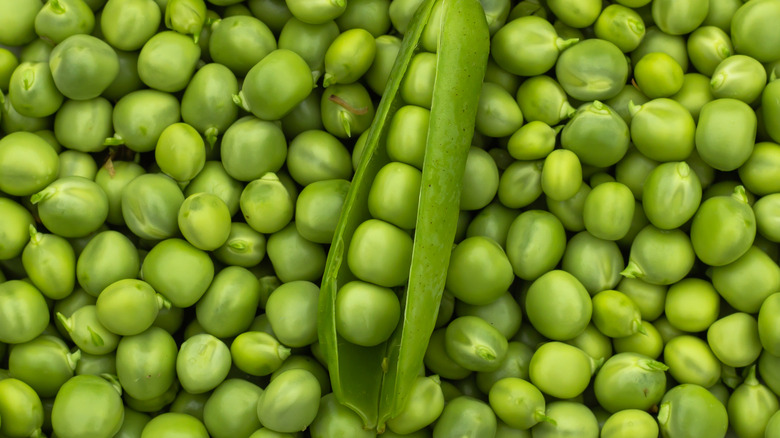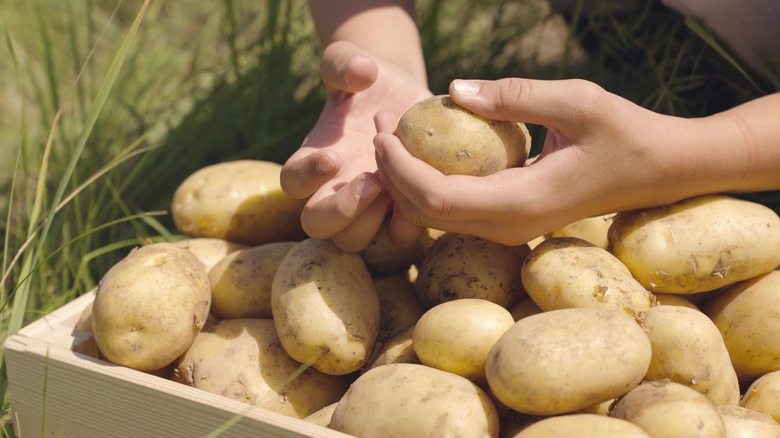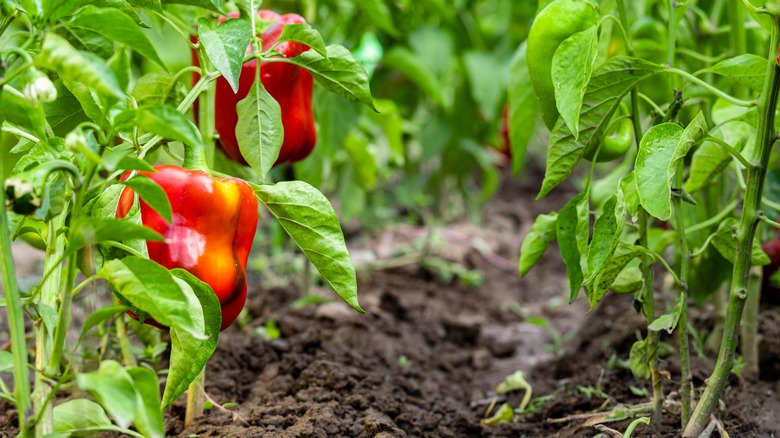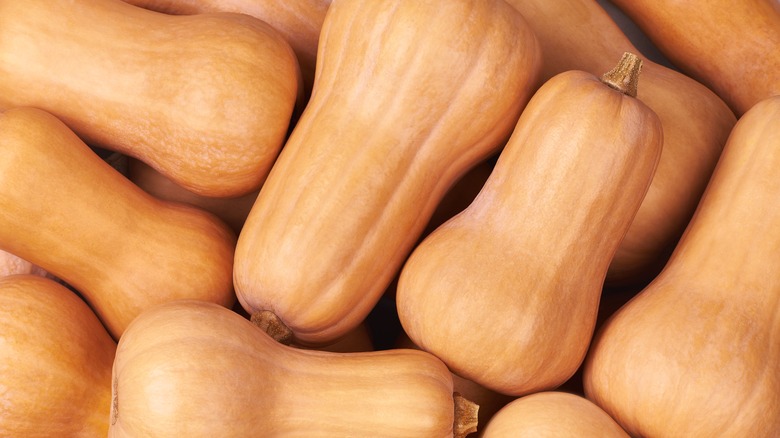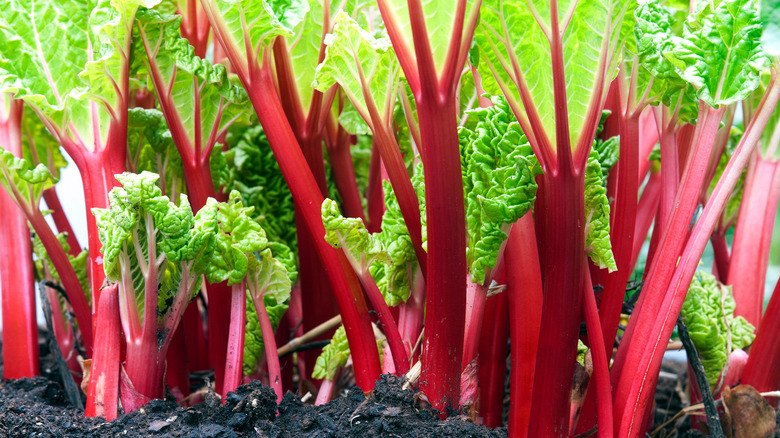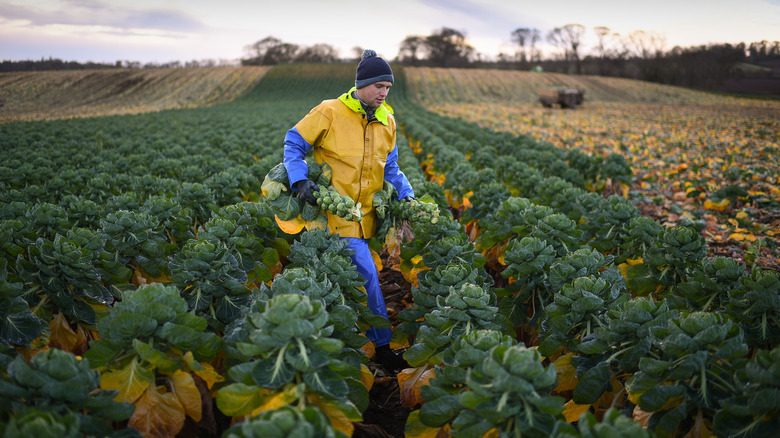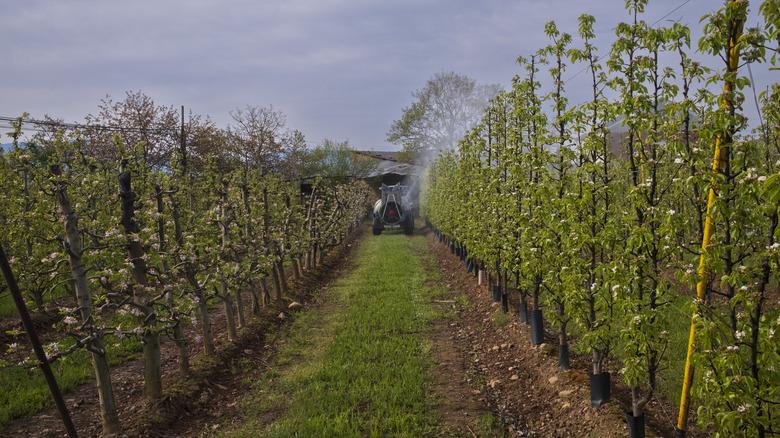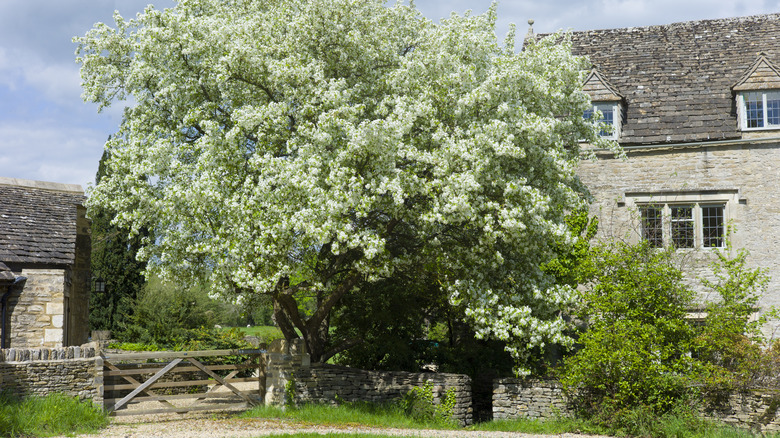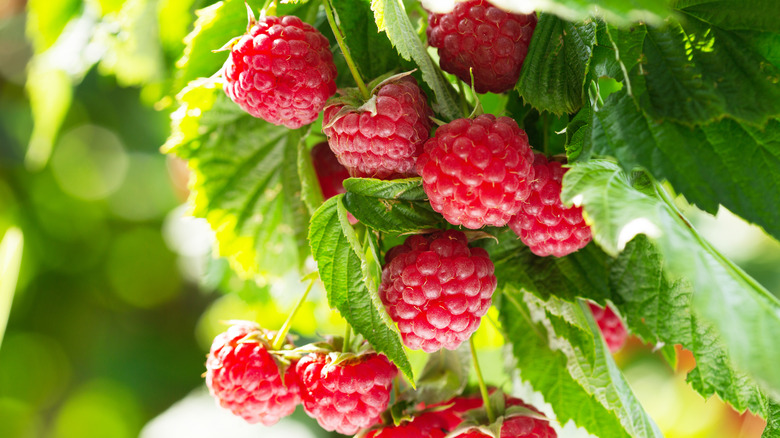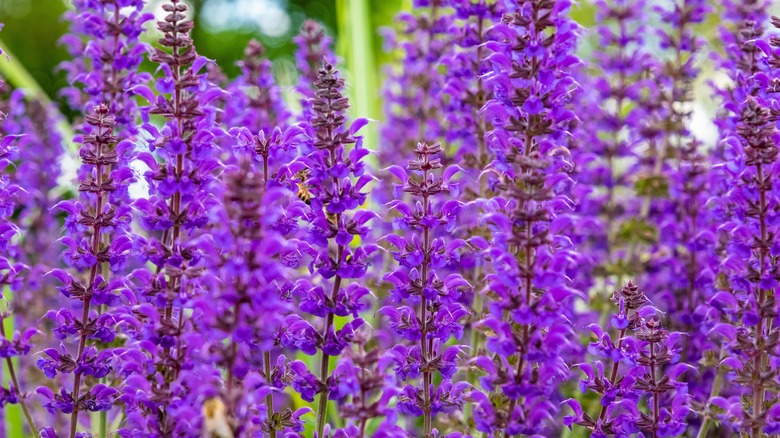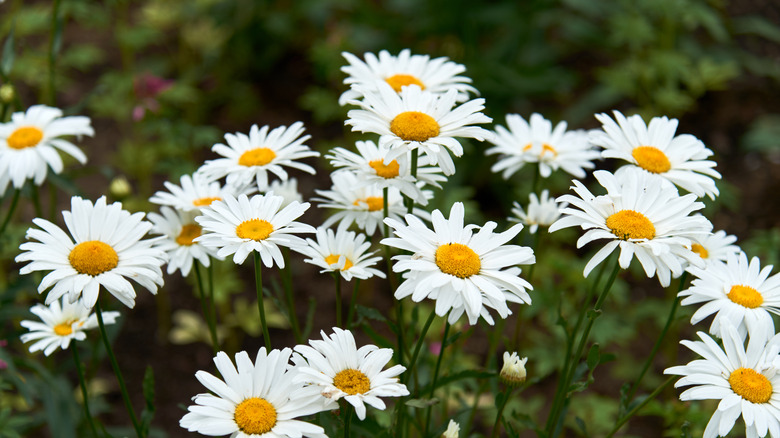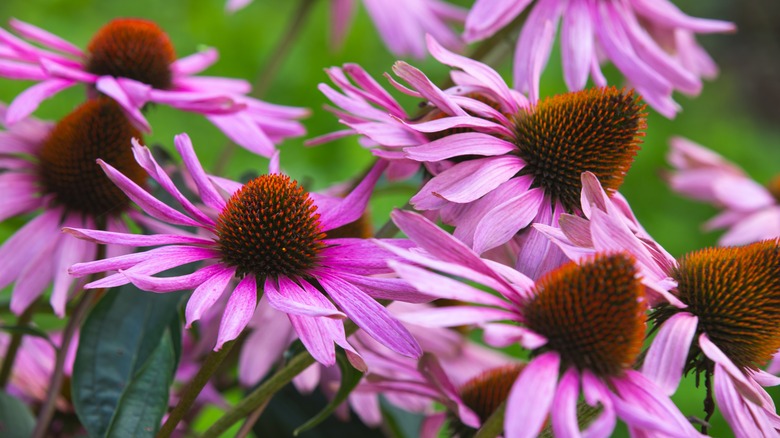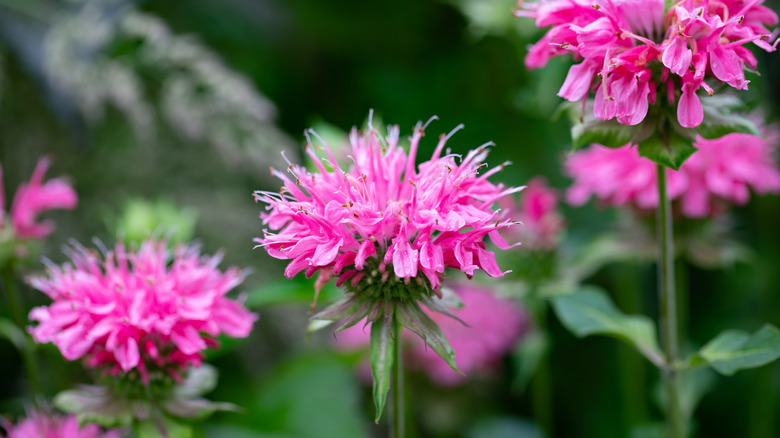15 Best Plants To Grow In USDA Zone 6
USDA zone 6 runs across the northeast from Massachusetts and Connecticut, dominating much of the land areas of Ohio, Missouri, and Kansas as it extends into the center of the United States, according to the Library of Congress. It even stretches up into parts of Michigan.
Climate considerations can vary wildly throughout these locations, and so your local weather may be slightly warmer or colder than the average. Zone 6 growers typically experience a yearly low temperature of about negative 10 degrees Fahrenheit and can begin planting in mid-March, according to Gardening Know How. This part of the country experiences a lengthy growing season, and home gardeners can take advantage of cold frames, greenhouses, or indoor seed starting to move the beginning of the coming growing season up even farther in the year. Transplanting viable seedlings outdoors after a few weeks of enjoying the head start of indoor germination and growth can make for an enormously successful yield, whether you're planting squash and tomatoes or simply want to cultivate an explosion of colorful flowers in the front yard each spring, summer, and fall.
Zone 6 covers a significant portion of the United States, including some large cities and surrounding suburban areas (Boston, Pittsburgh, Cincinnati and Columbus, Detroit, Indianapolis, Chicago, and St. Louis, to name a few), so an overview of great growing options here cover the homes and unique climate considerations of tens of millions of Americans just like you.
Lettuce
Lettuce can be used in all kinds of meals. From an addition to burgers and even for wrapping up sandwiches to its nature as a foundational salad element, lettuce is an essential green. Growing lettuce is easy in zone 6, and planting outside around the middle of March or indoors from a few weeks beforehand can be accomplished with great success, according to Fox Run Environmental Education Center.
Lettuce is grown from seed, and it quickly establishes leafy greens that can be harvested and consumed. Caring for your lettuce is a matter of maintaining soil moisture and aggressively weeding to prevent competition from unwanted vegetation.
Radishes
Radishes should be grown from seed and planted 12 inches deep, maximum, according to Gardening Know How). These are some of the easiest vegetables to grow in the garden and can be sown directly in the soil in early to mid-March. Radishes are a colder weather crop and, as a result, can be an effective early-season planting option for households in these areas of the United States. Radishes offer a relatively quick turnaround, with plants ready to harvest in as little as three weeks. For a fresh addition to salads that are easy to cultivate and harvest, there aren't many options quite like radishes.
Peas
Almanac notes that peas are one of the first crops that can be harvested each year, and they will grow successfully, even if a frost period returns after they are planted. Fresh peas outstrip the store variety by miles, and once you begin to grow peas, you'll never go back to relying solely on the grocery store for your supply of this wonderful green vegetable.
Peas won't stay fresh for long once they're harvested. Plant these early in the season and enjoy them for as long as you can (perhaps even extending their utility by freezing batches for later use).
Potatoes
Potatoes will be found on lists covering nearly all USDA zones. These can be grown in short or long seasons, and as soon as the warmth begins to creep into your local area, you can bury seed potatoes and let them work their magic. Potatoes grow well in zone 6, according to Gardening Know How, and using the mounding method will help you protect the leafy growth as it begins to sprout up out of the ground.
Any kind of potato that you enjoy can be grown with ease in the garden. Simply saving a few of your favorite types and allowing them to begin growing — or chitting — for a few weeks gives the crop all it needs.
Peppers
Peppers grow all over the world, and homeowners in zone 6 can take advantage of indoor growing to gain access to the spicy, warm weather varieties or wait until the weather starts to heat up to transplant peppers outdoors. Alternatively, you can simply grow cold weather crops exclusively that will withstand the colder early season temperatures, providing an elongated growing season as a result.
Peppers can be used in the kitchen as a dried and ground spice, fresh-chopped as a garnish, or roasted and blended to create sauces that can supplement virtually anything you might want to whip up. They are a versatile and highly health-conscious vegetable, says WebMD.
Squash
Gardening Know How recommends planting squash in May if you live in zone 6. Squash performs best when it can take advantage of longer sunlight and higher overall heat than other, earlier planting crops. These vine-growers are easy to propagate and can be sown directly into the soil from seed. Gardening Know How suggests planting them in rows or using the hilling method to ensure healthy vegetation and root development.
There are many different varieties of squash to choose from as well, so planting a few of your favorites in the garden can make for a unique blend of color and sizing in the end product.
Rhubarb
Rhubarb grows freely in warm climates as well as in colder zones. Maintaining a moist soil and ensuring full sunlight throughout the day will help you make the most of your rhubarb crop, according to Gardner's Supply Company.
Rhubarb is immensely simple to maintain once it's been started, and the plant will continue to produce stalks that are a staple in baked deserts for many years with little effort. Adding rhubarb to your garden is highly rewarding and adds a unique colorful feature that will surely turn heads.
Brussels sprouts
Brussels sprouts are a staple element of Thanksgiving or Christmas dinner in many households. They are a crisp, green vegetable that adds a roasted flavor and unique snap to the plate. Brussels sprouts are a welcome sight in kitchens across the country, and growing them can cut down significantly on your grocery bill around the holidays (considering the cost of these vegetables in many supermarkets).
Growfully suggests starting Brussels sprouts from seeds indoors in early or mid-June before moving the crop outside in August to grow and mature over the winter months. They will be ready to harvest in the following fall.
Apple trees
Apple trees grow all across the United States and the world. These plants require a bit of colder weather, which is naturally occurring in this band of the U.S. Apples are an essential ingredient in baked goods, pressed juice drinks, and alcoholic ciders and have for years been a go-to snack for children and adults alike.
Gardening Know How reports that there are more than 2,500 apple varieties successfully cultivated in the U.S., and some of the most popular types can be grown with ease in zone 6 (McIntosh, Honeycrisp, Fuji, and Pink Lady, for instance).
Pear trees
Pears are a great option for flowering trees in a zone 6 garden. Pears grow well in these areas, and both European and Asian pears make for a wonderful addition to the lawn. Happy Sprout notes that growing these pears is often similar in approach, but Asian pears ripen on the tree, whereas European pears must be harvested and ripened inside your home.
Fox Run Environmental Education Center reports that fruit trees of all kinds, including pear trees, grow best in soil with a pH between 6.5 and 7.0. Similarly, you'll want to add fertilizer to promote healthy growth for the first three years after planting.
Raspberries
Raspberries grow freely as both a native species and in specially selected varieties that perform admirably in home gardens. Raspberries, like strawberries and other fruits, come in summer-fruiting and ever-bearing varieties, according to Almanac. Mixing types is a great way to create a longer harvest period for your home and kitchen.
Raspberries are self-fertile, so planting a single bush can provide you with hundreds of berries all on its own. A few bushes is best for a family that loves the mix of sweet and tart that these small red berries provide on their own, in deserts, or even as a breakfast complement.
Salvias
Salvias come in a dizzying variety of different colors and types. Better Homes & Gardens notes 31 varieties that can make for a sea of color in your yard this year. They are good drought-tolerant flowers that grow abundantly in zone 6 and are immensely simple to cultivate. Salvias attract butterflies, and the flowers typically last a considerable amount of time in full bloom, according to Gardening Know How. The flowering component of the plants runs vertically along the stems, creating individual peaks of flowers that complement each other well when planted in bunches.
Daisies
Daisies are an iconic flower that grows well in zone 6. American Meadows notes that many homeowners opt to plant daisies in the fall or early spring to welcome flowers in the summer. Unlike other flowering plants that produce their blooms in the springtime, daisies will provide a longer window of flowering for your lawn by peeking out during the summer months.
The delicate white and yellow flowers offer a simple and beautiful addition to any garden, and they are incredibly easy to grow from seed. American Meadows also suggests that daisies are cold-hardy.
Coneflowers
Gardening Know How reports that coneflowers (Echinacea purpurea) are a native, purple bloom found all across the eastern United States. This flower resembles an offset color pigmentation from the daisy. Darker purple petals match with a black and yellow center that can be planted in dramatic contrast to the lighter tones of the daisy. When paired together, they can give your garden a unique vibrancy and depth of color. Coneflowers can grow to heights of 5 feet and bloom on the ends of incredibly sturdy stalks (similar to that of allium flowers).
Bee balm
Bee balm (Monarda) is a perennial flower that will continue to grow each year in your garden without intensive effort, says Gardening Know How. Each year it will reseed the soil, but deadheading some of the flowers can help you expand the volume of new blooms that you enjoy by helping you to control additional seeding.
Bee balm produces small flowers that bloom in reds, purples, and whites and typically attracts common pollinators like bees and hummingbirds (which gives it its name). These flowers are delicate and colorful, adding a great new feature to the garden.
